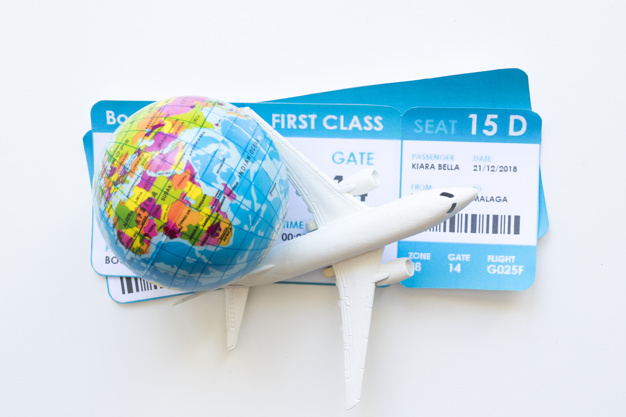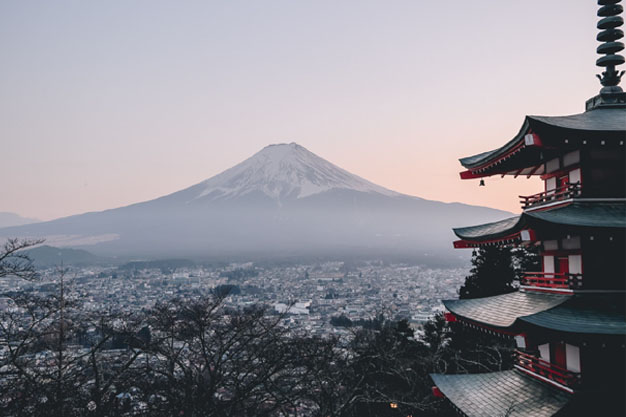January 2019
Wonderful places to visit in January
A new year has started and it is just the time to set some real travel goals. If you have been wondering about the best places to visit in January, we have you covered. Leave all the thinking to us and pick one from our choice of January-perfect destinations; all that you need to do is a severe affliction of wanderlust and tickets. So yes, here you go, make 2019 a year of travel.
Gujarat is a definite go-to in winters, especially in January, as this is when the famous Rann Utsav is on. A very vibrant and colourful event, this festival is a dive in the state’s art and culture, bringing together artisans from all across Gujarat and the country. You can have a gala time at the Rann of Kutch, famous as one of the largest salt deserts in the world. More so in January when the sun is not as harsh as it usually is in the region.
A winter trip to Spiti Valley is one of the wildest roadtrips that you will ever have. While most of the tourists visit the Himalayas in summers, winter is when magic begins here. Nothing less than an expedition, this road trip is pretty much doable in January as well. All that you need is a 4WD and lots of guts.
The Kochi-Muziris Biennale is already on; that and perfect weather conditions make January the best time to visit Kerala. There is nothing that can match the balmy afternoons spent on the backwaters here, some hours of roaming in the greens of Munnar, or simply going on a wellness retreat.
If chasing tigers in the misty mornings of January sounds like a great trip idea, Kanha National Park is where you should head to. This forest reserve in the state of Madhya Pradesh is much-loved by wildlife enthusiasts and photographers. You can choose to stay in a forest lodge for a very different experience here.
Singapore in January, especially in the first week, is more of classic Christmas and New Year destination. Its decked up in such flamboyant lights that it is hard to get any winter blues here. Shopaholics would love it all the more since January spells massive discounts and sales on all things good.
There is no looking over Thailand, regardless of how touristy the place has become. Look for the offbeat trails that take you close to nature if you are keen to avoid crowds. Just like Singapore, the urban parts of Thailand are all decked up in the new year spirit and there is a lot of fun to be had if you are into partying.
We know that Bali has been mentioned time and again, yet we will never skip it when the month reads January. This month sees great weather conditions, amazing beach parties, great deals on shopping and so much more. If not partying, Bali has a lot of hidden gems for the solitary souls too; you just need to know what your travel heart wants.
With a neighbour as gorgeous as Sri Lanka, you need not go to faraway places. A perfect destination for soaking in some sun, surfing, wellness retreats, train journeys and even a spiritual quest, there is no looking over this neighbour. If you are over Goa and Kerala and are craving to get one more stamp on your passport, it is Sri Lanka calling.
Gujarat is a definite go-to in winters, especially in January, as this is when the famous Rann Utsav is on. A very vibrant and colourful event, this festival is a dive in the state’s art and culture, bringing together artisans from all across Gujarat and the country. You can have a gala time at the Rann of Kutch, famous as one of the largest salt deserts in the world. More so in January when the sun is not as harsh as it usually is in the region.
A winter trip to Spiti Valley is one of the wildest roadtrips that you will ever have. While most of the tourists visit the Himalayas in summers, winter is when magic begins here. Nothing less than an expedition, this road trip is pretty much doable in January as well. All that you need is a 4WD and lots of guts.
The Kochi-Muziris Biennale is already on; that and perfect weather conditions make January the best time to visit Kerala. There is nothing that can match the balmy afternoons spent on the backwaters here, some hours of roaming in the greens of Munnar, or simply going on a wellness retreat.
If chasing tigers in the misty mornings of January sounds like a great trip idea, Kanha National Park is where you should head to. This forest reserve in the state of Madhya Pradesh is much-loved by wildlife enthusiasts and photographers. You can choose to stay in a forest lodge for a very different experience here.
Singapore in January, especially in the first week, is more of classic Christmas and New Year destination. Its decked up in such flamboyant lights that it is hard to get any winter blues here. Shopaholics would love it all the more since January spells massive discounts and sales on all things good.
There is no looking over Thailand, regardless of how touristy the place has become. Look for the offbeat trails that take you close to nature if you are keen to avoid crowds. Just like Singapore, the urban parts of Thailand are all decked up in the new year spirit and there is a lot of fun to be had if you are into partying.
We know that Bali has been mentioned time and again, yet we will never skip it when the month reads January. This month sees great weather conditions, amazing beach parties, great deals on shopping and so much more. If not partying, Bali has a lot of hidden gems for the solitary souls too; you just need to know what your travel heart wants.
With a neighbour as gorgeous as Sri Lanka, you need not go to faraway places. A perfect destination for soaking in some sun, surfing, wellness retreats, train journeys and even a spiritual quest, there is no looking over this neighbour. If you are over Goa and Kerala and are craving to get one more stamp on your passport, it is Sri Lanka calling.
Also read: Top 10 Reasons To Visit Shimla
To Know More Information About Package Tour Operator in Thane Mumbai ByCrossworld Holidays- Travel Agent In Thane
Source - www.timesofindia.indiatimes.com
Crossworld Holidays gives the Best Group Tours from Thane, Mumbai Contact us at (+91) 4038 4747 or Email us at - info@crossworldholidays.com



